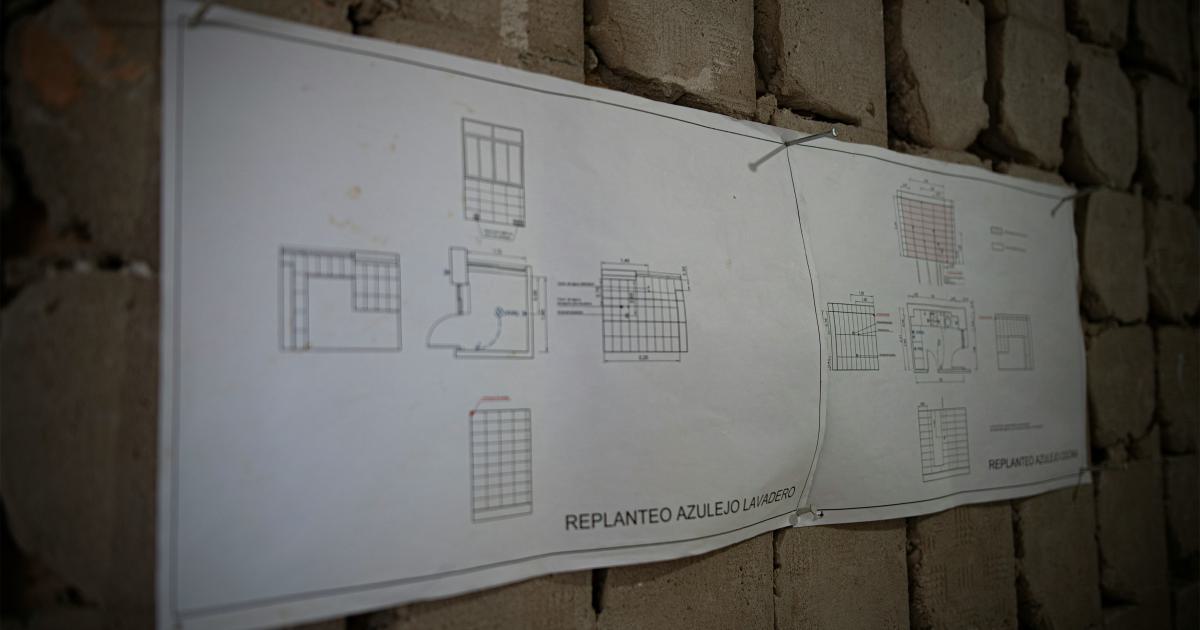The Untold Truth About Site Architecture for Web Applications


The Importance of Site Architecture
Site architecture is the foundation of any successful web application. It's the invisible backbone that supports the user experience, functionality, and scalability of your digital product. While many focus on the visual design and user interface (UI), the underlying site architecture often goes unnoticed - until things start to fall apart.

In today's fast-paced digital landscape, where users demand seamless experiences and lightning-fast performance, the importance of robust site architecture cannot be overstated. A well-designed architecture not only enhances the user experience but also enables your web application to handle increasing traffic, accommodate new features, and adapt to evolving business requirements.
Understanding the Basics of Site Architecture
Site architecture refers to the organization and structure of a website or web application. It encompasses the hierarchy of pages, the navigation system, the content organization, and the technical infrastructure that powers the digital experience.
At its core, site architecture is about creating a logical, intuitive, and scalable information hierarchy that allows users to easily find what they're looking for. This involves carefully planning the site's content, navigation, and structure to ensure a smooth and efficient user journey.
Beyond the user-facing aspects, site architecture also includes the behind-the-scenes technical components, such as the database structure, server configuration, and caching mechanisms. These technical elements play a crucial role in the application's performance, security, and overall scalability.
The Impact of Site Architecture on Web Applications
The quality of a web application's site architecture can have a significant impact on its success. A well-designed architecture can deliver tangible benefits, while a poorly planned one can lead to numerous challenges:
User Experience: A well-structured site architecture ensures a seamless and intuitive user experience, allowing users to quickly find the information or functionality they need. Conversely, a confusing or illogical structure can frustrate users and lead to high bounce rates.
Search Engine Optimization (SEO): Proper site architecture, with clear content hierarchies and logical navigation, can improve the visibility and ranking of your web application in search engine results. A poorly structured site can hinder search engine crawlers, negatively impacting your SEO performance.
Scalability and Flexibility: A robust site architecture enables your web application to scale efficiently as your business and user base grow. It should be designed to accommodate new features, content, and functionality without requiring major structural overhauls.
Performance and Responsiveness: A well-architected site leverages techniques like caching, content delivery networks (CDNs), and optimized database structures to deliver lightning-fast performance, even under heavy traffic loads.
Maintainability and Extensibility: A modular, well-documented site architecture makes it easier for your development team to maintain, update, and extend the web application over time, reducing technical debt and development costs.

Key Principles of Effective Site Architecture
Designing an optimal site architecture for your web application requires a deep understanding of user behavior, content organization, and technical best practices. Here are some key principles to consider:
1. User-Centric Design
The foundation of a successful site architecture is a user-centric approach. Start by thoroughly understanding your target audience, their needs, and their browsing habits. Conduct user research, create user personas, and map out user journeys to ensure your site architecture aligns with their expectations and goals.
2. Content Hierarchies and Information Architecture
Organize your content in a clear, logical hierarchy that reflects the importance and relationships between different sections and pages. This could involve grouping related content into categories, subcategories, and individual pages, with intuitive navigation and breadcrumbs to help users find their way.
3. Intuitive Navigation
Develop a navigation system that is easy to understand and use, with clear labels and a consistent structure across the entire web application. Ensure that users can quickly and effortlessly navigate to the information or functionality they need, regardless of which page they're on.
4. Modular and Scalable Design
Design your site architecture with modularity and scalability in mind. Break down your web application into independent, reusable components that can be easily added, removed, or modified as your business and user requirements evolve. This allows for more efficient maintenance, updates, and future expansion.
5. Technical Optimization
Optimize the technical aspects of your site architecture to ensure high performance, security, and scalability. This could involve implementing caching strategies, leveraging content delivery networks (CDNs), optimizing database structures, and designing a flexible, future-proof infrastructure.
6. Accessibility and Inclusive Design
Ensure that your site architecture and overall web application are accessible to users with diverse abilities and needs. This includes adhering to Web Content Accessibility Guidelines (WCAG) and considering the needs of users with visual, auditory, motor, or cognitive impairments.

Implementing Effective Site Architecture
Translating the principles of effective site architecture into a practical, real-world web application requires a thoughtful, step-by-step approach. Here are the key steps involved:
1. Conduct a Comprehensive Analysis
Begin by gathering detailed information about your target audience, business goals, and existing content and functionality. Perform user research, competitive analysis, and a thorough audit of your current site structure to identify strengths, weaknesses, and opportunities for improvement.
2. Define the Information Architecture
Based on your research and analysis, create a clear, logical content hierarchy and information architecture for your web application. This involves grouping related content, determining the navigation structure, and mapping the relationships between different sections and pages.
3. Design the Navigation System
Develop a navigation system that is intuitive, consistent, and accessible across your web application. This includes the main navigation menu, breadcrumbs, internal linking, and any supplementary navigation elements (e.g., footer links, sidebar menus).
4. Optimize the Technical Infrastructure
Ensure that the technical infrastructure supporting your web application is designed for performance, security, and scalability. This may involve decisions around server configuration, database structure, caching mechanisms, and the use of content delivery networks (CDNs) or cloud-based services.
5. Implement Modular, Reusable Components
Structure your web application's codebase in a modular, reusable way, with independent components that can be easily added, removed, or updated as needed. This could involve using a component-based framework or following a well-defined design system.
6. Continuously Monitor and Iterate
Regularly monitor the performance, user behavior, and feedback related to your web application's site architecture. Use this data to identify areas for improvement and implement ongoing optimizations to ensure your architecture remains effective and adaptable over time.

Common Site Architecture Patterns and Approaches
When designing the site architecture for your web application, you can draw inspiration from various proven patterns and approaches. Here are some of the most commonly used:
1. Hierarchical Architecture
This traditional approach organizes content and functionality into a clear, nested hierarchy, with a main navigation menu leading to subpages and deeper levels of content. This structure is intuitive for users and supports SEO by providing a well-defined content taxonomy.
2. Flat Architecture
In a flat architecture, the content and functionality are organized on a single level, with minimal hierarchy. This can be effective for web applications with a limited scope or for situations where users need quick access to specific information or features.
3. Modular Architecture
A modular architecture breaks down the web application into independent, reusable components that can be easily added, removed, or rearranged. This approach supports scalability, maintainability, and flexibility, as the application can evolve without major structural changes.
4. Personalized Architecture
This approach tailors the site architecture and content presentation to the individual user's preferences, behavior, and context. By leveraging user data and machine learning, a personalized architecture can provide a more customized and relevant experience for each visitor.
5. Headless Architecture
In a headless architecture, the front-end presentation layer (the "head") is decoupled from the back-end content management system (the "body"). This approach allows for greater flexibility in developing and deploying the user interface, while still maintaining a robust content management system.

Advanced Site Architecture Techniques
As web applications become more complex and user expectations continue to rise, web designers and developers must explore advanced techniques to enhance the effectiveness of their site architecture. Here are some cutting-edge approaches:
1. Adaptive Site Architecture
Adaptive site architecture leverages artificial intelligence (AI) and machine learning to dynamically adjust the information hierarchy, navigation, and content presentation based on individual user behavior, preferences, and context. This approach can provide a highly personalized and optimized experience for each visitor.
2. Headless and Decoupled Architectures
Headless and decoupled architectures separate the front-end presentation layer from the back-end content management system, allowing for greater flexibility, scalability, and the ability to create omnichannel experiences. This approach is particularly useful for web applications that need to deliver content across multiple platforms and devices.
3. Progressive Web Applications (PWAs)
Progressive Web Applications (PWAs) are a modern approach to building web applications that combine the best features of traditional websites and native mobile apps. PWAs leverage advanced site architecture techniques, such as service workers, caching, and offline functionality, to provide a seamless, app-like experience for users.
4. Microservices and Serverless Architectures
Microservices and serverless architectures break down the web application into small, independent, loosely coupled services that can be developed, deployed, and scaled independently. This approach enhances the scalability, flexibility, and maintainability of the overall site architecture.
5. Edge Computing and Content Delivery Networks (CDNs)
Leveraging edge computing and content delivery networks (CDNs) can significantly improve the performance and responsiveness of your web application's site architecture. By caching and serving content from servers geographically closer to the user, these technologies can reduce latency and improve the overall user experience.

Pitfalls to Avoid in Site Architecture
While designing an effective site architecture for your web application, it's important to be aware of common pitfalls that can undermine your efforts. Here are some key issues to watch out for:
Overly Complex Hierarchies: Avoid creating overly deep or complicated content hierarchies that can confuse users and make it difficult for them to navigate your web application.
Inconsistent Navigation: Ensure that your navigation system is consistent across all pages and sections of your web application, with clear and intuitive labeling.
Lack of Scalability: Failure to design your site architecture with scalability in mind can lead to performance issues and difficulty accommodating future growth and changes.
Poor Technical Implementation: Overlooking the technical aspects of your site architecture, such as database structure, caching, and infrastructure, can result in performance problems and security vulnerabilities.
Neglecting Accessibility: Failing to consider accessibility requirements and inclusive design principles can exclude users with disabilities and limit the reach of your web application.
Insufficient User Testing: Relying solely on assumptions or internal stakeholder feedback, without conducting thorough user testing and research, can result in an architecture that does not align with user needs and expectations.
Lack of Ongoing Optimization: Neglecting to continuously monitor, analyze, and optimize your site architecture based on user feedback and data can lead to a suboptimal user experience over time.

Conclusion
Effective site architecture is the foundation of a successful web application. By prioritizing user-centric design, content hierarchies, intuitive navigation, technical optimization, and scalability, you can create a digital experience that delights users, drives engagement, and supports your business goals.
As the digital landscape continues to evolve, web designers and developers must stay ahead of the curve, exploring advanced site architecture techniques like adaptive design, headless architectures, and edge computing. By mastering the art and science of site architecture, you can future-proof your web application and stay ahead of the competition.
Remember, site architecture is not just a one-time exercise - it requires an ongoing, iterative approach, with regular monitoring, analysis, and optimization to ensure your web application remains relevant, efficient, and adaptable. Embrace the power of site architecture, and unlock the full potential of your web application.